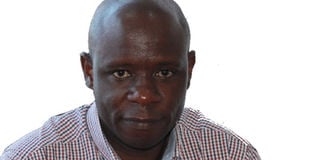What has Universal Secondary Education achieved in Uganda?

In January 2018, the Ministry of Education and Sports announced the phaseout of the Universal Secondary Education (USE) Public-Private Partnership (PPP) programme, which had supported students with a Shs47,000 subsidy per term for their fees for more than 10 years.
In 2016, more than 460,000 students – or 28 per cent of all secondary students – were enrolled in USE private schools. This indicates that PPP schools have been playing a big role in meeting the demands for secondary education in Uganda. It also suggests that there are many parents and schools awaiting for news on what new policy might replace the USE PPP to govern engagement between the ministry and the country’s large, private secondary education sector.
Over the past three years, EPRC has conducted research on one network of private secondary schools that has been part of the USE programme. These are schools run by an NGO, Promoting Equality in African Schools (PEAS).
Since 2008, PEAS has opened 28 secondary schools in 21 districts that serve predominantly rural communities. The research investigated what impact these schools have had on access, quality and affordability of education in Uganda. In the analysis, the characteristics and learning outcomes of students in randomly selected PEAS schools were compared with those of students in government and other private schools.
The results indicated that PEAS schools have expanded access to secondary schooling by establishing schools in poor and remote locations, and by allowing more generous PLE cut-off scores on enrolment. At each evaluation point, it was found out that significantly, more PEAS students came from the poorest households compared to students in government and private schools.
PEAS schools also admitted hitherto academically weak students – the average Primary Leaving Exam (PLE) score for PEAS students was significantly worse than that of government and private students.
PEAS students were also more likely to have repeated a class at primary level, and to have come from larger families with less educated parents and siblings. These results suggest that PEAS schools serve very different children than other private schools, and support many students who even government schools fail to reach.
Despite their disadvantage, PEAS students performed just as well as other students on the National Assessment for Progress in Education (NAPE) English and Mathematics tests. Among the weaker students – those who scored Division 3 or 4 at PLE – PEAS schools were the most effective at raising their academic achievement levels compared to government and private schools.
The study investigated the reasons for the greater learning achievements in PEAS schools, and found that student outcomes appear to be closely linked to strong school management, and positive teacher and student support systems. Teachers at PEAS schools had more positive beliefs about how the community views their schools, about their management, about their preparedness to teach the curriculum, their level of training, their pay and conditions – despite being paid less than teachers in government schools – and the timeliness of their pay.
These results suggest that the leadership model adopted by PEAS schools, which focuses on regular coaching and support to teachers, and ensures community ownership through PTAs and boards of governors, is successful in improving education performance. In terms of the cost of schooling, the evaluation collected information on the tuition and non-tuition fees charged by different school types.
On the whole, the evaluation found that no schools were completely free to attend. However, the total costs incurred by the household to send a child to a PEAS school were appreciably lower than both government and private schools at O-Level for all students. For example, for USE day-students, total average costs in PEAS schools per term were 12 per cent lower than government school average costs, and 27 per cent lower than private school average costs.
For students who do not qualify for USE, the difference between PEAS and government and private school fees are even greater. These trends suggest that for the least advantaged – students who performed poorly at PLE – PEAS provides an invaluable service by helping them learn the most and pay the least relative to other schools.
In summary, the study found that PEAS schools serve highly disadvantaged and academically weak students, and do a better job of helping them to learn. This finding demonstrates that Public PPPs can work, and that the right kind of private partners can benefit from wider education sector goals in Uganda. However, government must be thoughtful in the selection of private partners to ensure they will truly help deliver these goals.
PEAS wants to continue to expand its model to more districts in Uganda, and believes partnership is key to achieving this aim. As government phases out the USE PPP, PEAS welcomes the opportunity to explore alternative partnership models with the Ministry of Education aimed at benefitting Ugandan children.
Mr Senkasi is the country director,
PEAS Uganda




